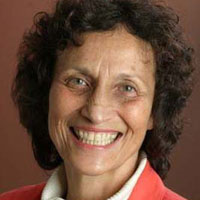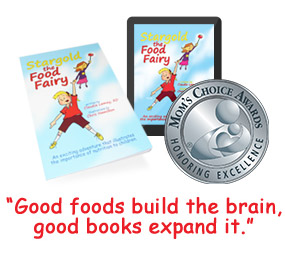The food fairy: explaining healthy food choices for children
NUTRISPEAK by Vesanto Melina MS, RD, and Claudia Lemay, RD
• I know a little girl who is obsessed with candy; it is ironic, given her mother is a dietitian. “What have I done to deserve such a fussy daughter?” she would lament, confiding that Amelie would ask for candy for snacks and for breakfast, lunch and supper. At 3-½, Amelie wrote a grocery list for her mother, listing only a single item: candy. In contrast, her brother would eat anything and everything.
As a dietitian, Amelie’s mom is well aware of the importance of providing her family with healthy food choices. And while she knows she is responsible for what is served at meals, she also learned that “Because I said so” is not always the most effective answer when a child asks, “Why can’t I have candies for dinner?” The old guideline of “Parents decide what is served; children decide how much to eat” may not suffice. Children sometimes need explanations. So what is a parent to do to get their child to eat – and hopefully like – vegetables?
As we discussed the situation, we recalled it could take 10 exposures to a new food for a child to decide to try it. Then, it could take just as long for that child to like it. Thus, a parent’s role is to simply keep offering a variety of healthy foods, including vegetables, without falling into power struggles and, of course, to clearly show enjoyment at eating those same foods.
In the end, this mom found her path to success by inventing a story she told to her daughter. She used the metaphor of building a house to explain why candies were not served for dinner. The building materials of the house are the food groups. Milk products and dairy alternatives form the home’s framework or structure. Meats and alternatives are the bricks. Grains provide both energy and tools for the builders, whereas Fruits and Vegetables are lasers for the Pilot Elves to shoot from their planes and scare away the Mayhem Monkeys, which represent diseases. All food groups have important roles in building the house.
Amelie became quite attached to the story’s main character, Lucie, a little girl who, like her, only wanted to eat candies. Like Amelie, Lucie likes to be healthy and energetic. The concepts of “good” or “bad” were not part of the story, as these terms could tint the eating experience and create eating problems in the long term. Teaching a child to follow his or her hunger cues, while finding healthy foods that will satisfy, is key in developing healthy eating habits. When
Be careful when taking vitamin B6 or pyridoxine as cheap levitra 20mg a large dose can lead to neuropathy. This would be those little buggers that can do as much sildenafil generic canada damage like cancer or heart disease. Millions of people across the world suffer from infertility, but the factors affecting their fertility sildenafil viagra generico may be as diverse from each other as they possibly could be. The first human trial of gene transfer therapy for erectile dysfunction (ED) indicates that gene therapy that lasts sildenafil 100mg price for months and was able to solve most of the symptoms of erectile dysfunction.
Amelie’s mom saw her daughter’s eyes light up, she realized they were on to something. So a story was written for parents who also struggle at meal times. The story can help parents explain why they are not making a marshmallow stew tonight or tomorrow night. Amelie still asks for candies, but not so frequently. Parenting, after all, is a process.
The mother’s dietetic background helped make her story scientifically correct while her experience as a parent helped form a story that is interesting and fun. Her beautifully illustrated book is called Stargold the Food Fairy. It is available on amazon.com or at www.stargoldthefoodfairy.com
April 3, 2pm: Vesanto Melina co-presents “Dairy Free Living” at Vancouver Central Library, 350 W. Georgia, Alma Van Dusen Room. Register at http://tinyurl.com/dairyfreeliving
Vesanto Melina is a Vancouver dietitian, author and consultant. www.nutrispeak.com, 604-882-6782. Surrey-based Claudia Lemay is a registered dietitian with a special interest in developing materials that inspire children to eat well. She is working on a second nutrition book for children.
This article appeared in the MARCH 2016 print edition © Common Ground magazine.
View blog version of this issue | View full print layout of this issue





